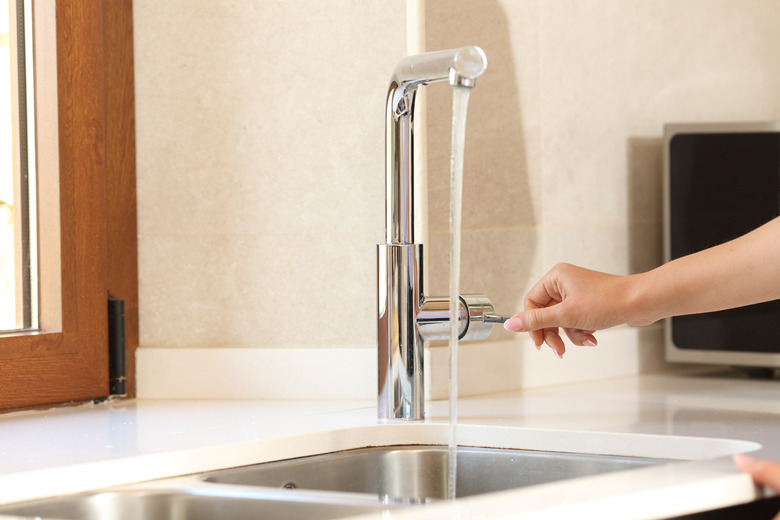How To Clear Well Water After Pump Replacement
During a well pump replacement, the water system gets disturbed and may be contaminated by dirt and microscopic organisms. At this point, the system needs to be sanitized and flushed. Most companies will clear your well for you as part of the contract after replacing a well pump. If your contract falls short or you replaced the pump yourself, it's best for the health and safety of your whole household to take this important step. This can be a time-consuming process, but it's not too difficult for the average DIYer.
Take Precautionary Measures
Take Precautionary Measures
For their health and safety, warn everyone in the household not to use the water during this process; put up signs as a reminder. Wear appropriate personal protective safety gear, such as goggles and chemical-resistant gloves, while working with chlorine bleach.
Check the instructions of any filtration or softening system to ensure that chlorine won't harm the system. If there are no instructions available, consult with the system manufacturer before allowing chlorine to enter any type of water purification system.
How to Clear the Well
How to Clear the Well
Things Needed
References
1. Attach a Hose
Attach a hose long enough to reach the well, casing it to an outside faucet or directly off the pressure tank. Run the water to a safe location until it runs clear.
2. Isolate the Water Heater
Isolate the water heater from the plumbing system. Chlorine can harm stainless steel and many other types of water-heating devices.
3. Mix the Chlorine Bleach
Using regular chlorine bleach, not scented or gelled, mix 2 quarts with 10 gallons of water while wearing the proper safety gear.
4. Shut Off the Pump
At the circuit breaker, shut off the power to the well pump. You may at this time also want to shut off the power to any water-heating devices as well.
5. Remove the Well Cap
With two wrenches and the power still isolated, carefully remove the well cap.
6. Restore Power to the Pump
Turn the circuit breaker back on to restore power to the pump and run the water from the outside faucet or hose.
7. Disinfect the Well
Pour the water-bleach mixture down the well casing with the outdoor faucet running. Once all 10 gallons are in the well, keep running water into the well casing until you smell chlorine.
8. Run Inside Faucets
With the outdoor faucet still running back in the casing, turn on each indoor faucet until the smell of chlorine is present; then shut it off and move to the next one. Limit the amount of chlorinated water that goes down the drain as it can harm your septic system.
9. Run the Water Back to the Casing
Keep the water running from the outside faucet back into the casing for one hour, continuously washing down the inside of the casing walls. After an hour has passed, remove 10 gallons of water from the well using the 5-gallon buckets. Make sure that the pump has stopped and all other faucets are off.
10. Rinse and Replace the Cap
Using another 10 gallons of water, mix in 2 quarts of chlorine bleach. Rinse off the well cap with about 1/2 gallon of the mixture. Pour the remaining 9 1/2 gallons down the casing and reinstall the cap. Ensure a good seal to keep any foreign debris out of your well.
11. Shut Off the Pump
Shut off power to the pump at the circuit breaker. Make sure all faucets are shut off and allow the system to sit idle for a minimum of eight hours and a maximum of 24 hours. The longer the system is idle, the better the outcome of your hard work.
12. Flush the System
After waiting eight to 24 hours, it's time to purge the well. Attach the hose to the outside faucet. Restore power to the pump by turning the circuit breaker back on and allow the hose to run outside, away from grass, bushes, and trees until the chlorine smell is gone. Then run the inside faucets until the chlorine smell is gone. You may also want to let your neighbors know what you're doing to avoid alarming them.
